Candy Pot 8 Sided
€70.00
Khātam (Persian: خاتم) is an ancient Persian technique of inlaying. It is a version of marquetry where art forms are made by decorating the surface of wooden articles with delicate pieces of wood, bone and metal precisely-cut intricate geometric patterns. Khatam-kari (Persian: خاتمکاری) or khatam-bandi (Persian: خاتمبندی) refers to the art of crafting a khatam. Common materials used in the construction of inlaid articles are gold, silver, brass, aluminum and twisted wire.
- Description
- Additional information
- Reviews (0)
Description
Designing of inlaid articles is a highly elaborate process. There are sometimes more than 400 pieces per square inch in a work of average quality.[1] In each cubic centimeter of inlaid work, up to approximately 250 pieces of metal, bone, ivory and different kinds of wood are laid side by side, glued together in stages, smoothed, oiled and polished. Inlaid articles in the Safavid era took on a special significance as artists created their precious artworks. Woods used include betel, walnut, cypress and pine. These works include doors and windows, mirror frames, Quran boxes, inlaid boxes, pen and pen holders, lanterns and shrines.

In the art of Khātam, geometric patterns are composed of equilateral triangles that are made of dentin, bone, wood, and bronze wire. These shapes and patterns are glued with a thickness of two millimeters at the outer surface or on the interior and exterior of the various articles in order to prepare the product. Isfahan artists are masters of Khātam-Kāri in the profession.
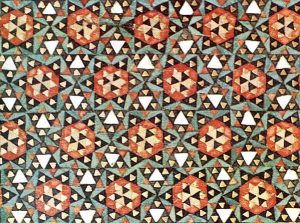
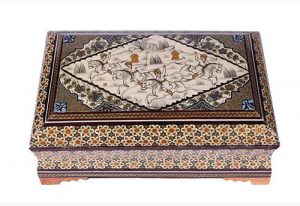
Khātam is the glory of Iranian art. Khātam’s art shows that the Iranian artist is very accurate and patient in his work. In the Isfahan market, you can see and buy different types of it in various shapes. If you are looking for very beautiful and magnificent souvenirs, you can buy Khātam in various shapes such as a Jewelry box, a tissue box, a garbage pail, a pencil case, a set of tobacco pipe and lighter from Isfahan bazaar.
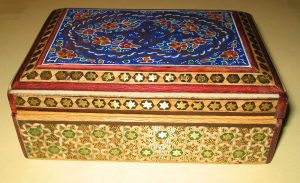
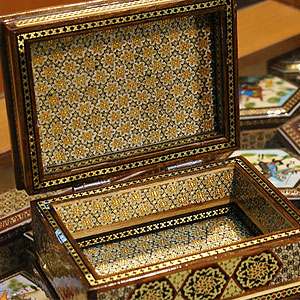
This craft consists in the production of incrustation patterns (generally star-shaped), with thin sticks of wood (ebony, teak, ziziphus, orange, rose), brass (for golden parts), camel bones (white parts). Ivory, gold or silver can also be used for collection objects. These sticks are assembled in triangular beams, assembled and glued in a strict order to create a geometrical motif such as a six-branch star included in a hexagon.
At times, cylinders are cut into shorter cylinders and then compressed and dried between two wooden plates, before being sliced for the last time, in 1 mm wide trenches. These sections are ready to be plated and glued on the object to be decorated, before lacquer finishing.
The tranche can also be softened by heating in order to wrap around objects. Many objects can be decorated in this fashion, including jewellery boxes, chessboards, pipes, desks, frames or musical instruments.

Design and Usage
Marquetry designing is highly elaborate. In each cubic centimetre of space, up to approximately 250 pieces of metal, bone, ivory and wood are laid side by side. This art, to some extent, has existed in Iran from long ago.
Inlaid articles in the Safavid era took on a special significance, as artists used this art on doors, windows, mirror frames, Qur’an boxes, pen and pen holders, lanterns and tombs.
The ornamentation of the doors of holy places predominantly consists of inlaid motifs. These specimens can be observed in the cities of Mashhad, Qom, Shiraz and Rey. In the Safavid era, the art of marquetry flourished in the southern cities of Iran, especially in Isfahan, Shiraz and Kerman.
An inlaid desk, which is one of the definitive masterpieces of this art, was awarded the first prize and a gold medal in an art exposition in Brussels recently. This desk is now preserved in the National Museum of Washington. Also, in some royal buildings, doors and various items have been inlaid. The inlaid-ornamented rooms in Sa’dabad and Marble Palace in Tehran are among masterpieces of this art.


In Safavid era, khatamkari was so popular in the court that princes learned this technique alongside the art of music or painting. In the 18th and 19th centuries, khatamkari declined, before being stimulated under the reign of Reza Shah, with the creation of art schools in Tehran, Isfahan and Shiraz.
Incorporating techniques from China and improving it with Persian know-how, this craft existed for more than 700 years and is still practised in Shiraz and Isfahan.
Current Status
Currently, this art is being practised in Isfahan, Shiraz and Tehran. Inlay masters, preserving the nobility of their art, have brought forth great innovations in this fine art.
Woodcarving is one of the outstanding Iranian arts, which require dexterity and artistic skills. It provides wood, ivory or bone in simple or complex shapes for use in khatamkari.
Excellent specimens can be found in historical mosques, palaces and buildings. Some of the Iranian inlaid works are preserved in museums at home or abroad.
Images of leaves, flowers, birds and animals predominate.
Latticed woodwork, which developed later into an exquisite art, is also manually made by craftsmen. Old latticed doors and windows of Iran are famous.
Additional information
| Weight | 1023 g |
|---|---|
| Dimensions | 21 × 26 × 6 cm |


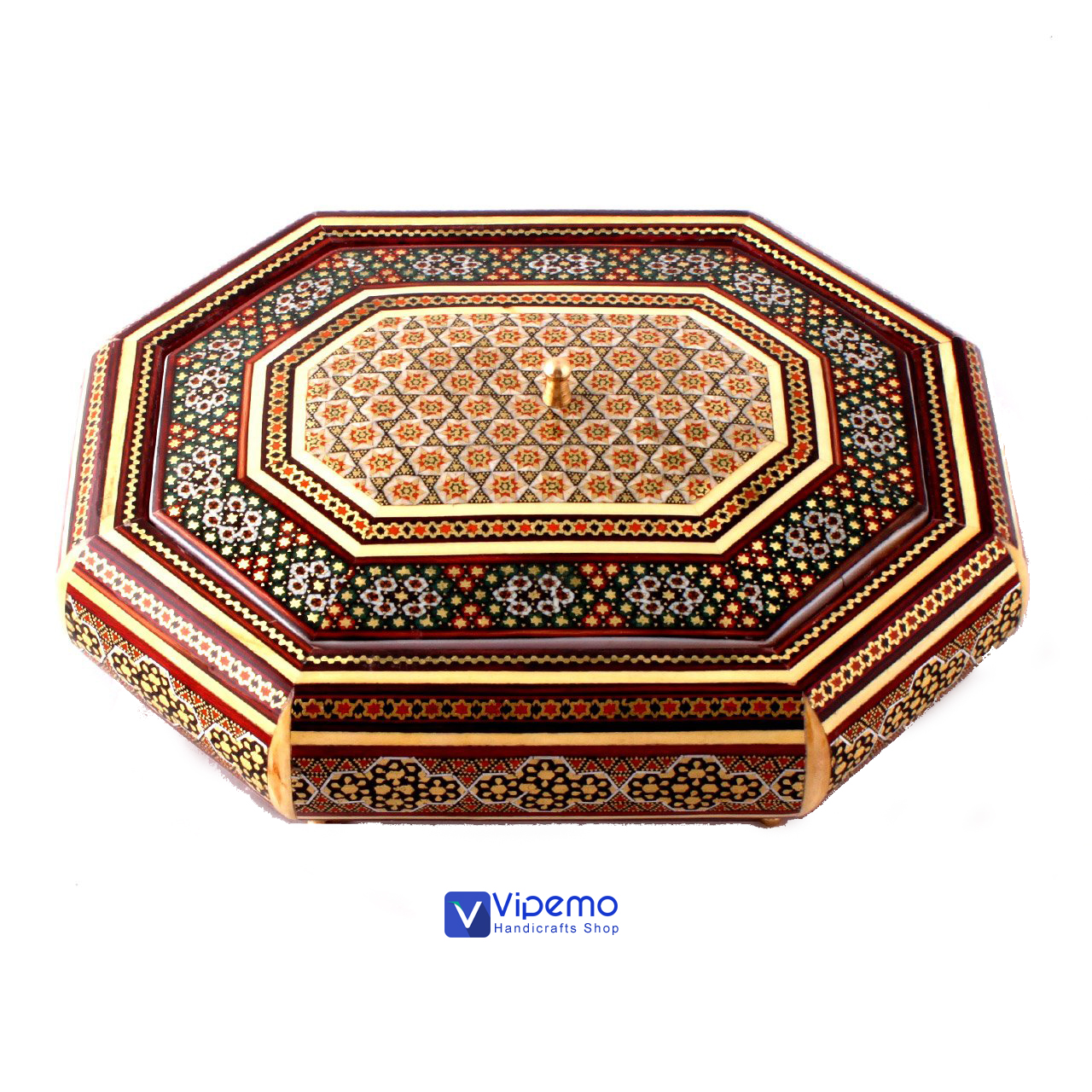
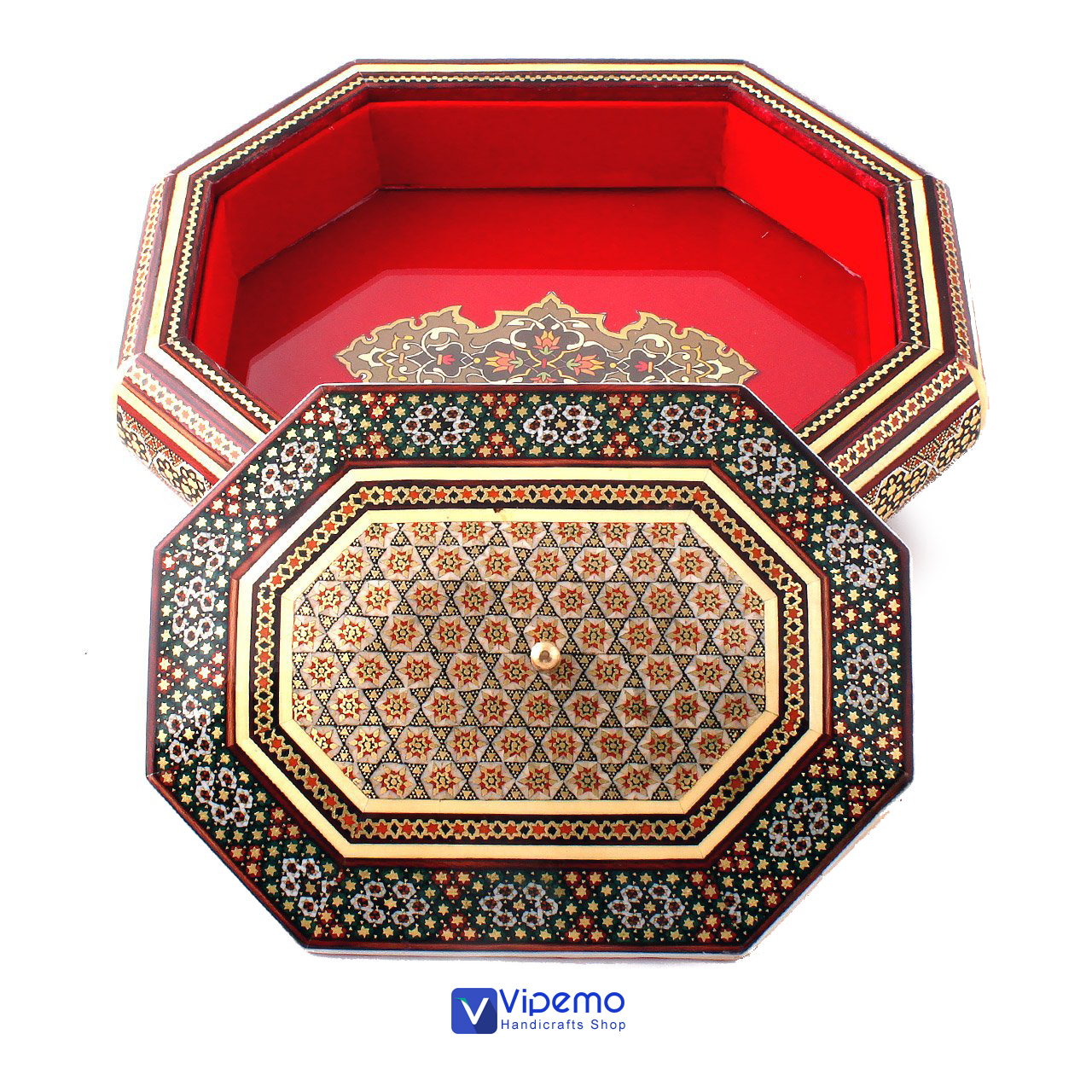
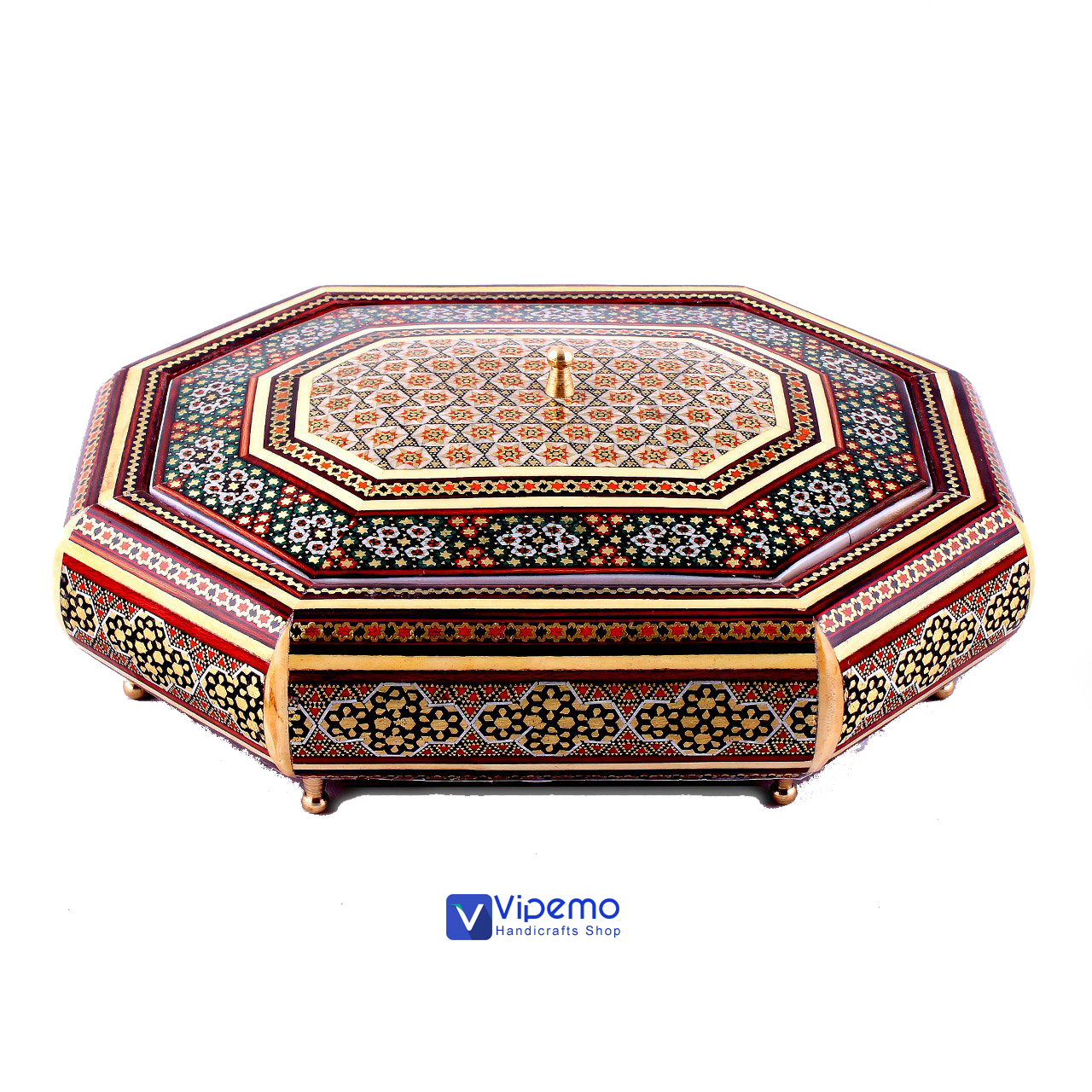
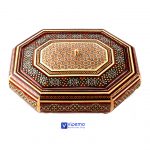
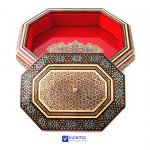
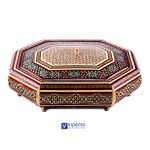
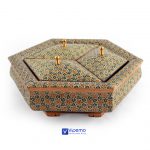
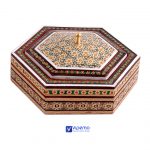
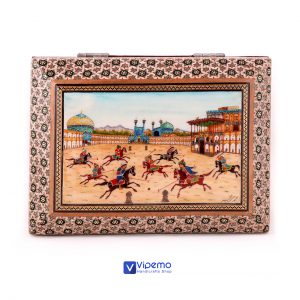
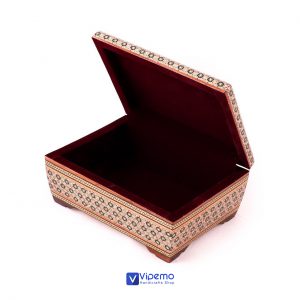
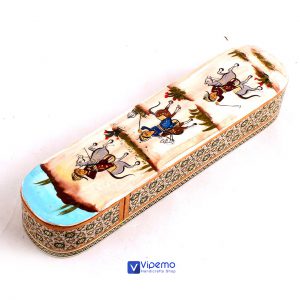
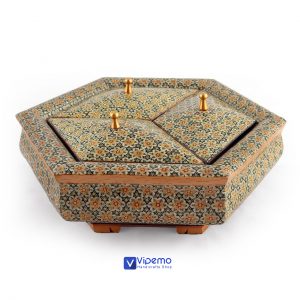
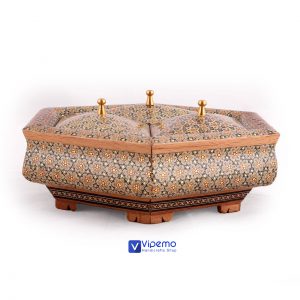
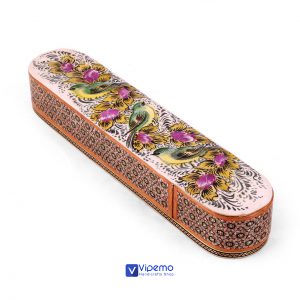
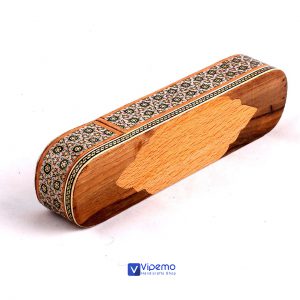
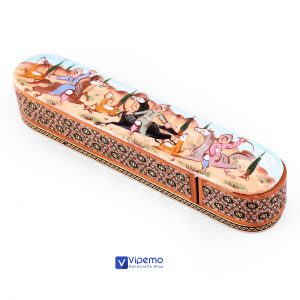
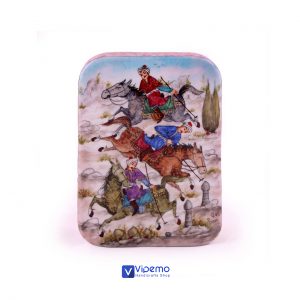
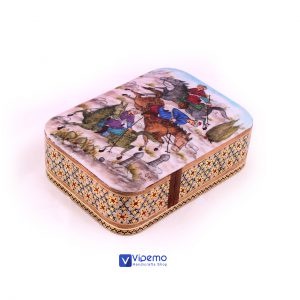
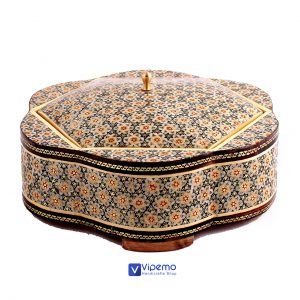
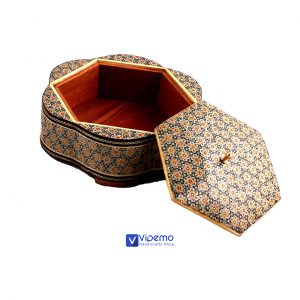


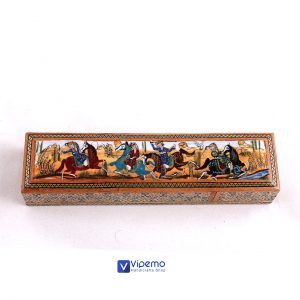
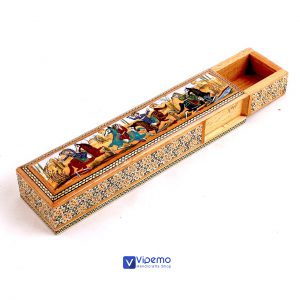
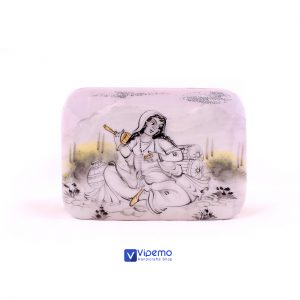
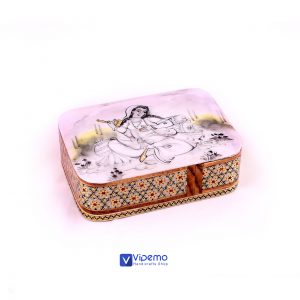
Reviews
There are no reviews yet.